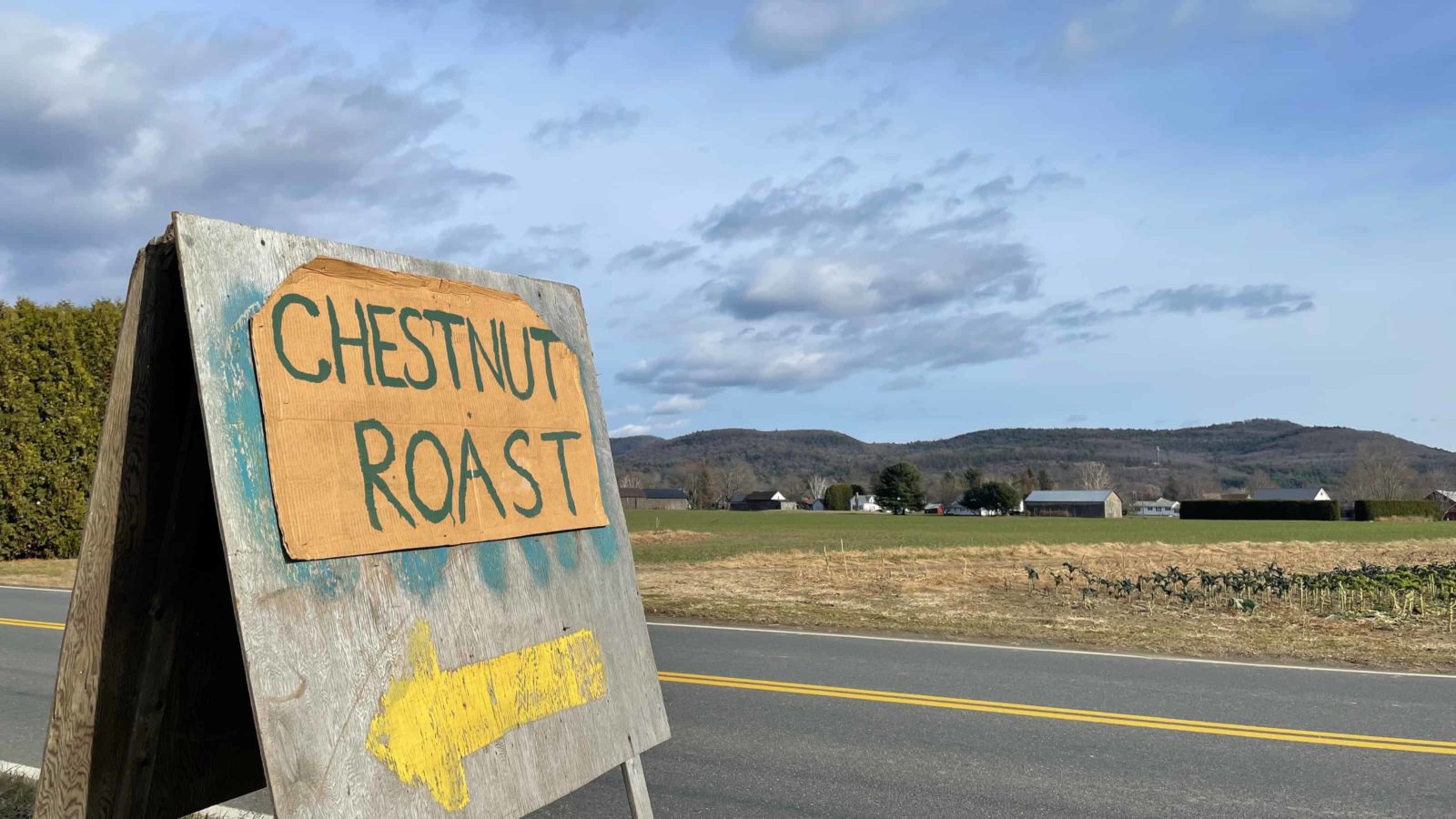I’ve never cracked a hard-boiled egg on my dashboard before. You can tell it’s a pullet egg, and that it’s fresh — it’s small, because the hen is young, and the shell is sturdy. I know the hen; the friends handing me the egg have been keeping chickens since the spring. I trade them pumpkin muffins for homemade dilly beans. The whole day has been like this, zany and surprising. We’re picnicking in my car in unexpected sun, eating with our fingers, in the middle of an expedition.
It’s a holiday quest in a way. We planned it in a patchwork of places we wanted to see, two of us together, and we made it as surprise for her partner. This morning we met in North Adams, telling him only that we were taking him on an adventure.
They showed me strategies for cracking black walnuts first, in his woodshop. We tried setting a nut in his iron vice and tightening it slowly until the shell gave. The nuts are pale and firm, and they have a light tang to them like nothing else. He ran one through a fine, cutting it lengthwise, saw and showed me the patterns the shell forms.
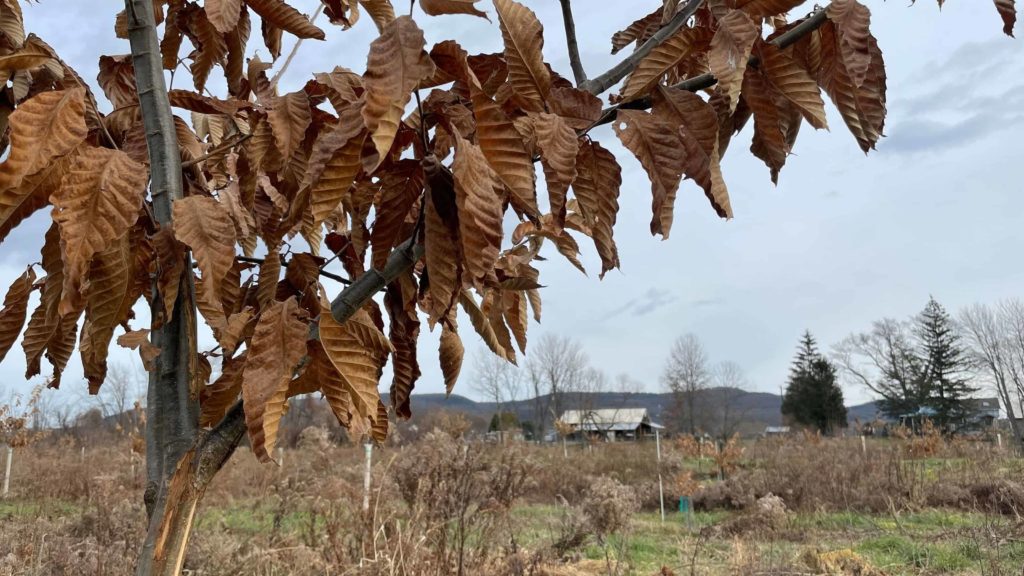
Big River Chestnuts grows chestnut trees along the water.
Then we set out east on Route 2 over the ridge, following the Deerfield River and talking about the 600 Highwaymen’s play at the 62 Center. It’s partly scripted and partly improv, an immersive play, an attempt to draw the audience in and build a story they can shape. The company sets out a stack of cards and asks the audience to read and follow them. I came out feeling that I found it most powerful when the cards let us get off-script — asked a question we couldn’t answer yes or no, gave us a prompt and room to act.
The road and the river took us down the valley, to the catalyst for the whole trip — chestnuts. Big River Chestnuts in Sunderland had opened a holiday farmstand on Sundays in the season, with local nut flours and coffee and chai, and Christmas trees and cookies — and real roast chestnuts, not far from the trees that grew them. Big River has a chestnut orchard along the riverbank, a center for agroforestry, and they grow hazelnuts and elderberry and more.
The farmers were setting up when we got there, and they offered us chestnuts to taste, hot out of the pan. They slow-roast the nuts in their husks until they’re softened and you can crack them in your teeth. The chestnut tasted malty sweet and almost caramelized. It was unlike anything I’d ever had before, so unexpected it made the world feel larger, mischievous.
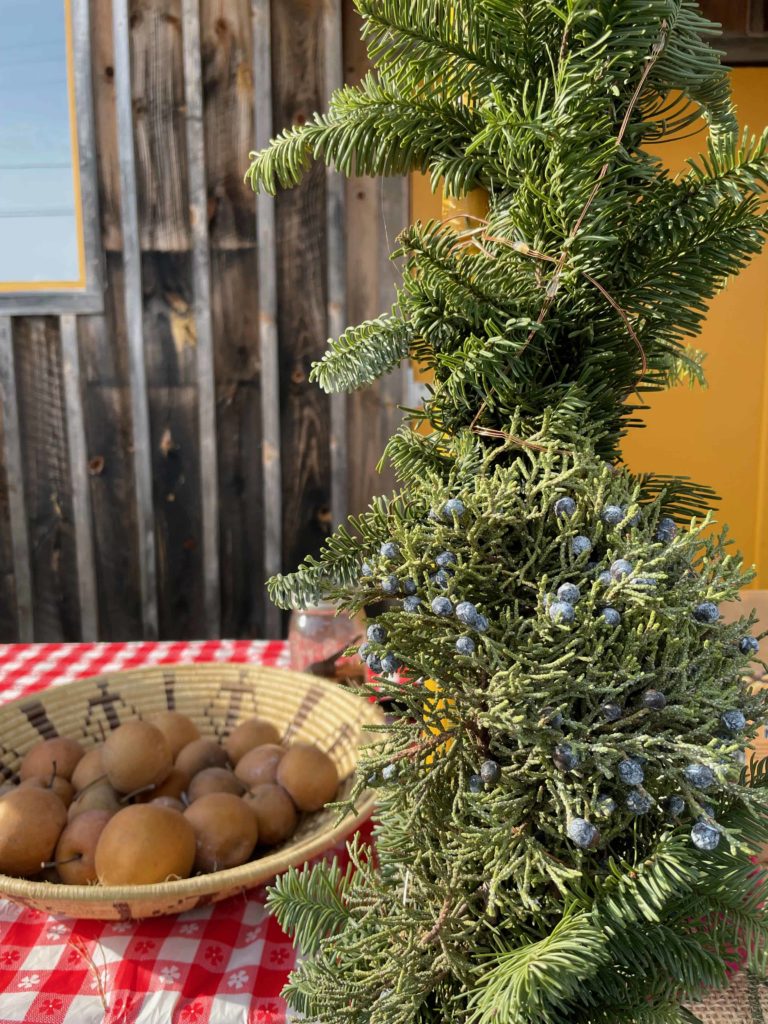

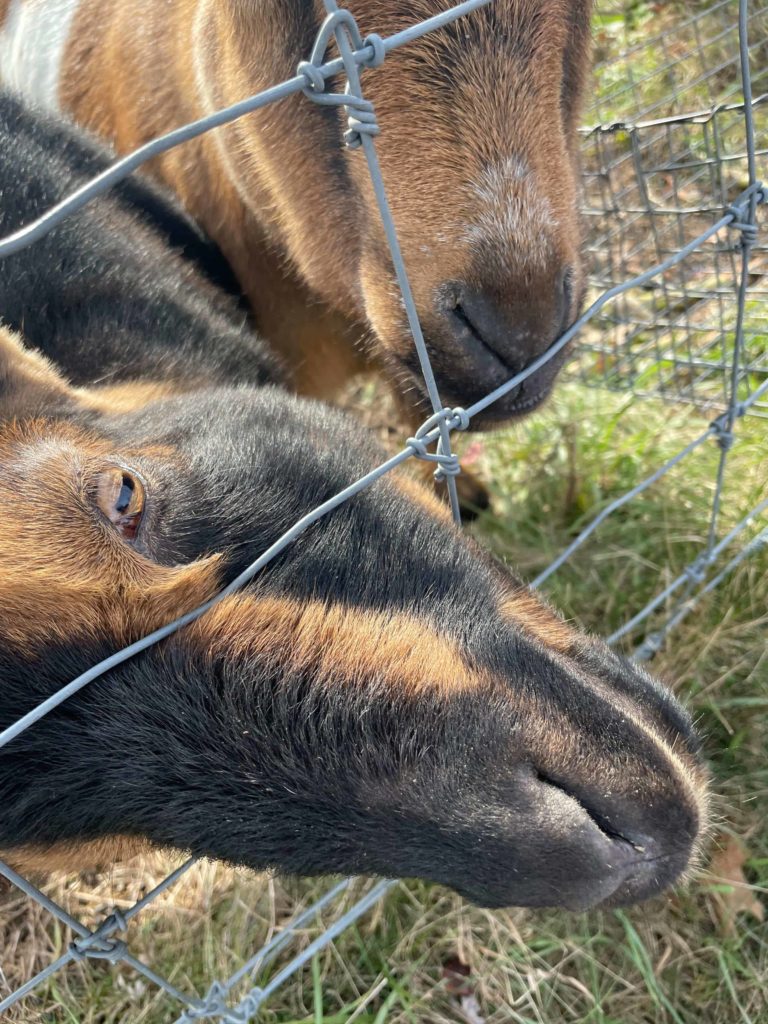

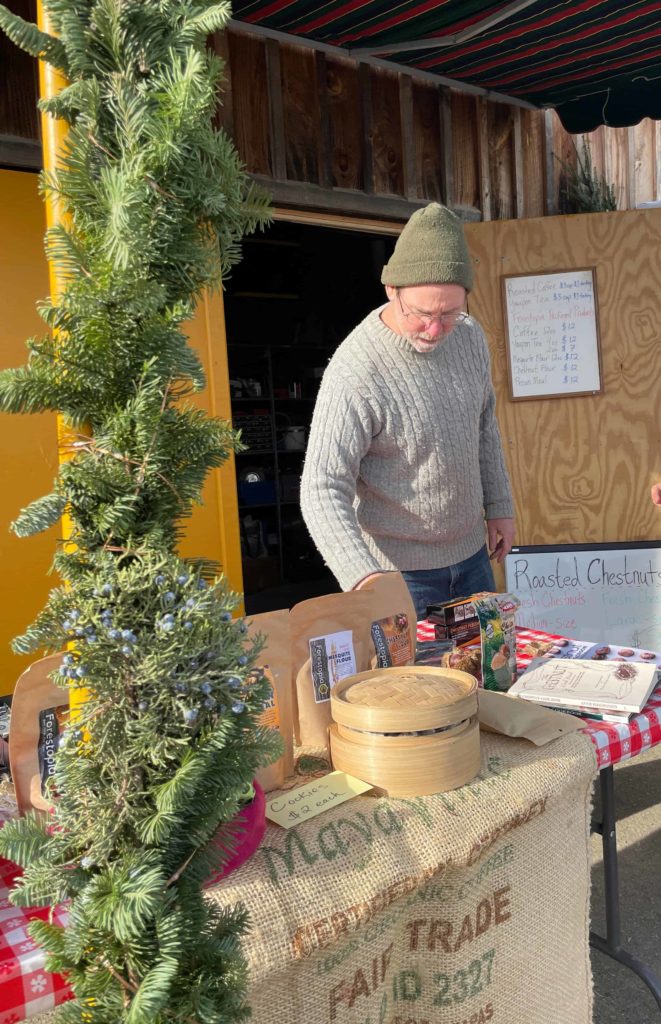

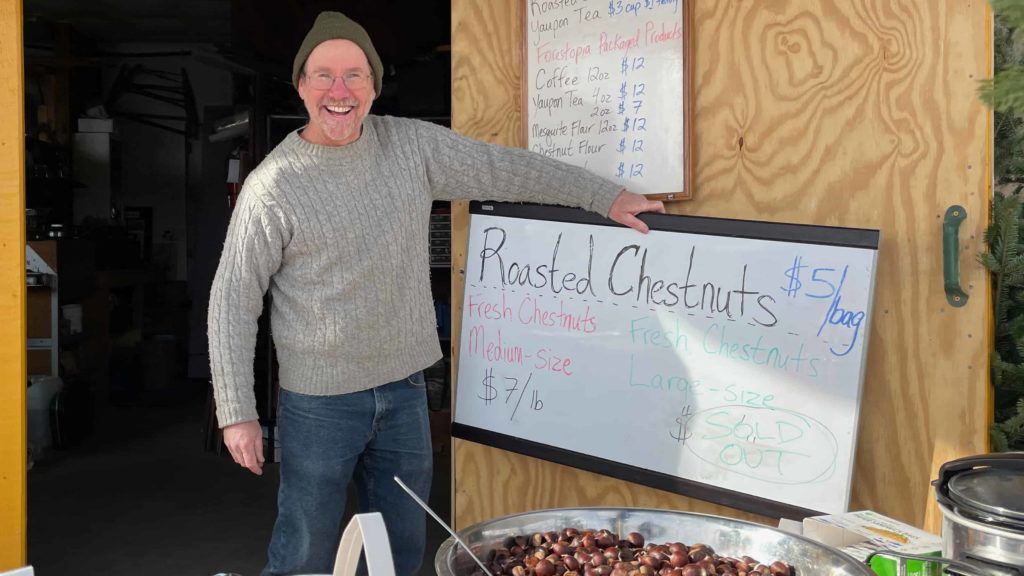

We walked through the orchard down below. The young trees still held onto their tapered leaves, as bronze as oaks. We wondered how much rain they liked to soak up … and looked over a homemade water tank set up on weathered pallets. Then we fed old nuts to the farm goats and rubbed their foreheads, and tried a taste of acorn chai.
Then south down the road, with a stop at an Asian market for sauces and spices … and we turned up an old road and into Hampshire College, though we only knew it by the signs. We were heading past farm houses and winter fields, and finally into a lot by a long, low building made of windows with a banner of brightly painted caterpillars.
We had our picnic outside the Eric Carle Museum of Picture Book Art, and then we slipped in on the last day of their fall exhibit on wordless picture books, and one of their first days of Kadir Nelson’s oil paintings to Kwame Alexander’s poem, The Undefeated.
‘This is for the unlimited, the unstoppable ones, the dreamers …’ — Kwame Alexander
Speechless takes a broad view, from the early 1900s to today, and I find something uniquely magical about books without words. I’m saying this as a writer — books with words are my world. But stories told like this, in careful images, can unfold like the day we’re having, in detail and bright color.
They seem to feel more free to walk into new worlds, or to transform this one. Lynd Ward’s young boy is flying on a silver pony in the moonlight. Jerry Pinkney’s lion, massive and tawny gold, is staring out in growing fear from a rope net that has caught him, and a field mouse looks up, and up, and up, at the knots. Molly Bang’s grey lady hides in a vast old tree in a wood of summer ferns and deep green shade.
Around the corner, Alexander has written a tribute to “the unlimited, the unstoppable ones / the dreamers …” and Nelson has painted them, strong and warm and large as life. In his full-sized paintings here, they feel close enough to talk to. They look out of the frame, standing together, and I want to know all their names.
Frederick Douglass I recognize, and James Baldwin, and is that Langston Hughes at college age in his blazer? Alexander and Nelson are reaching across 400 years of Black Americans, calling to musicians and artists, athletes, political leaders and activists, and I feel the genius and strength in their expressions, humor and sadness and determination.
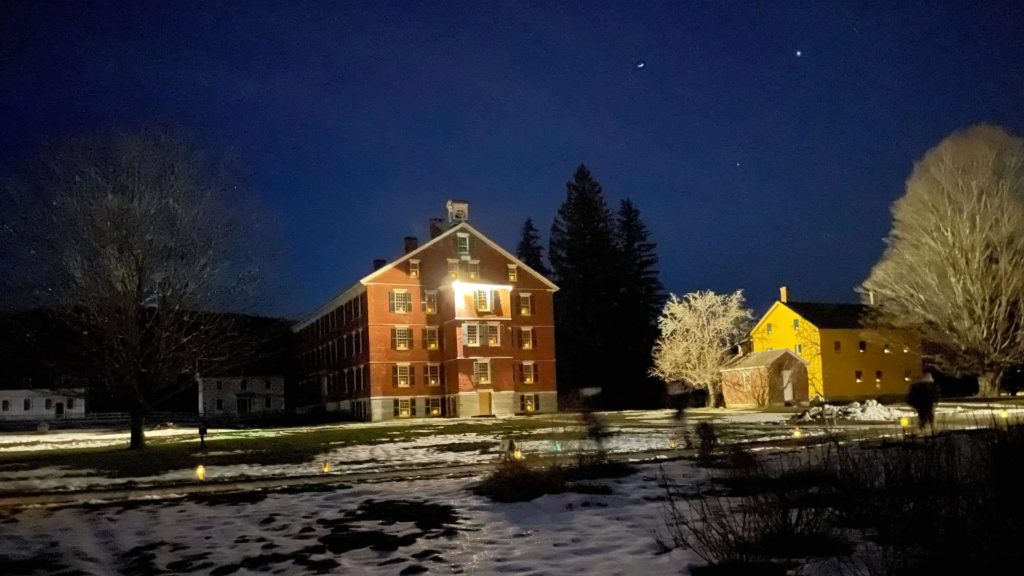
Hancock Shaker Village opens after dark on holiday weekends.
They come with me into the bookshop here, as I look through for young family, and I have them in mind as the three of us climb into the car in the last of the afternoon light and head back across the mountains to our last port of call. We’re talking about Louise Erdrich and Octavia Butler’s novels on the way, and I wonder what Louise Erdrich would write, if she created wholly new worlds or futures or planets.
In the full dark, we come down another country road and pull into another quiet space. None of us are sure what to expect here. Hancock Shaker Village has held holiday events before, but not at night. We’re hoping for candles and quiet and animals in the barn.
And they are here … the wooden walkway is lined with lights, and the brick dwelling has a flame in each window. The night is quiet and cold in the first light snow of the year. The central theme, though, is the Round Stone Barn illuminated inside out with Joe Wheaton’s light projections.
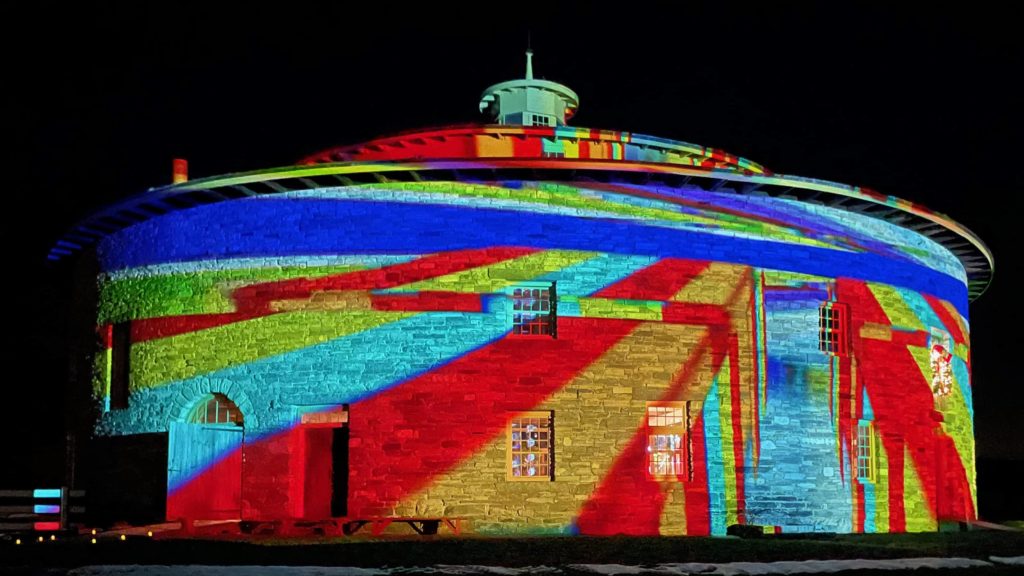
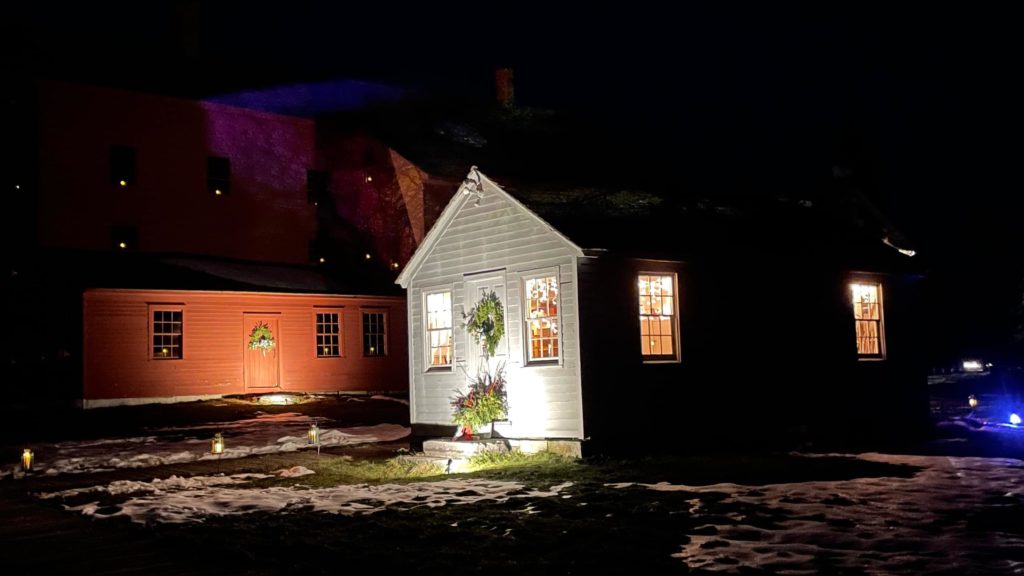
It feels to us like a mix of styles. The projections are large, bright, abstract, and beautiful in themselves. The barn is thunderous with choral music, and the donkeys and sheep pull at their hay while the rafters over their heads turn vivid shades of red. The sound and music feels Shaker Modernist, minimal and contemporary. The quiet walk outside feels older and quieter. It could look back to New England farms, and winter festivals, and oil lamps in Nazareth.
We stand for awhile around the fire pit, talking with someone who turns out to be a neighbor in Williamstown and soaking in the quiet. And then the three of us head home to share chicken soup and fall honey from their beehives.

A fire pit glows at night, giving visitors a place to warm up at Hancock Shaker Village.

